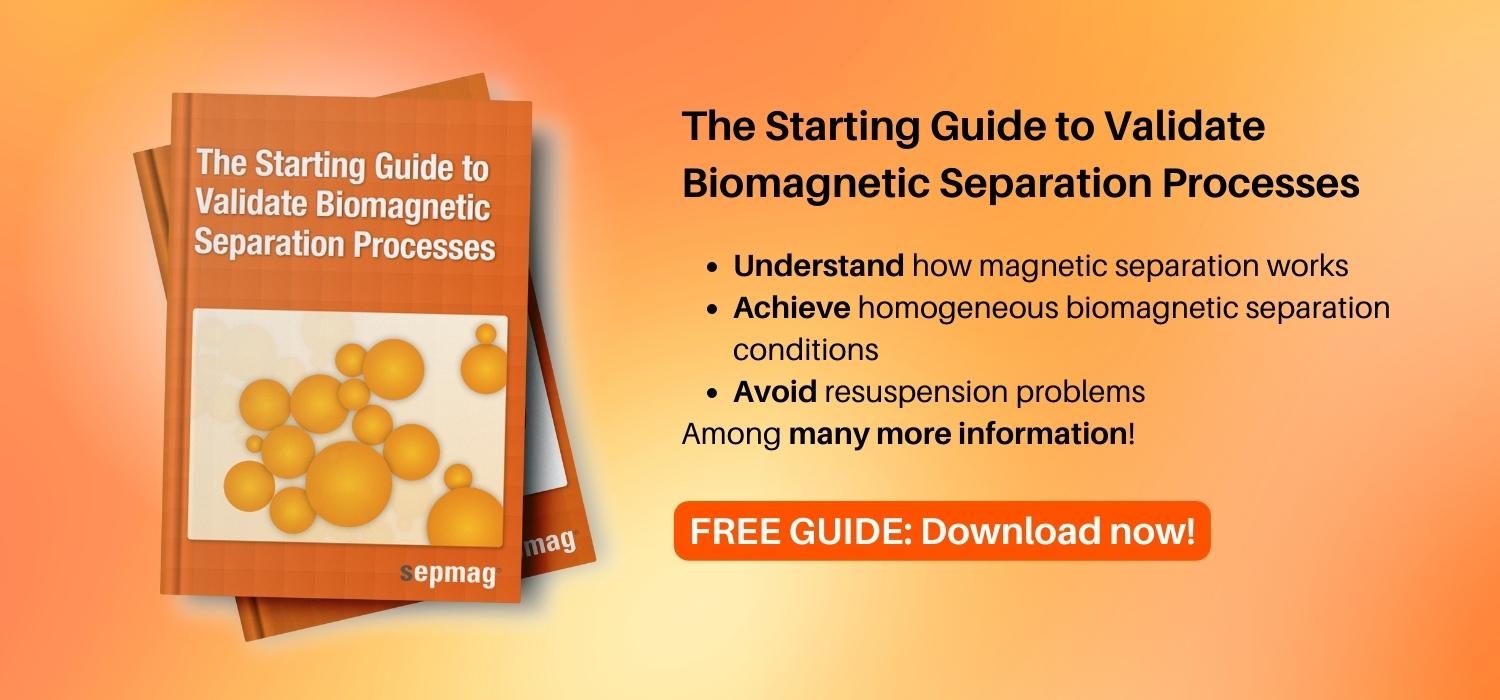It is common knowledge that industries and biotech companies must validate any production process in order to maintain the consistency of their products. In processes that cannot be validated at a high level, lot numbers become very important so that the end user can compare and understand lot to lot variation.
This post is about magnetic bead separation and how to validate this process. If you are interested in this topic, and are willing to learn more about it, download our Free Guide The Starting Guide to Validate Biomagnetic Separation Processes:
The ultimate desire of any company is to be able to sell a product that has little to no lot-to-lot variation, thus increasing customer confidence and allowing the customer to proceed with their assays without worrying about extensive control testing of kits. Time, money and personnel are all saved if the end product can be trusted to be the same no matter when it was produced.
How must biomagnetic separation processes be validated?
When considering standard biomagnetic separation processing, the lot-to-lot variation tends to be fairly significant. Although a great deal of effort is put into making sure the raw materials (e.g. antibody properties, buffers and magnetic beads) are standardized, consistent and well-defined, the magnetic separation process itself is much less controlled.
The standard biomagnetic separation process is typically not validated at every step. While a technician or scientist signs off at each point in the process, no readings are kept of the bead movement, bead speed and characterization of the suspension’s optical density over time. Because of the non-homogeneous nature of the magnetic forces, magnetic beads do not move uniformly. This non-uniform movement can lead to excessive bead aggregation, loss of time attempting to recover material and loss of material itself.
Homogeneous biomagnetic separation processes, on the other hand, are much easier to monitor and validate. Because of the greater stability in the process itself, industry can more readily establish quality control protocols, standard operating procedures and validation audits. By optically monitoring events such as bead speed and density of the solution over time, companies can be sure that their end product is standardized and consistent, even if the batch volumes differ.
This type of monitoring is possible because all beads move at the same speed using homogenous separation. Any change in the process itself can be recorded and corrected at all points in the production. Lot-to-lot consistency with this new technology can help biotechs and industries save money, time and precious resources.
If you found this article interesting and want to get a deeper insight in the topic of magnetic bead separation, make sure to check these articles from our blog:





